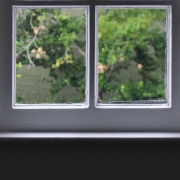Wi-Fi has dominated connectivity over the past decade or so, but it now faces several challengers. Most people are now aware of the threat 5G poses to its dominance because it will provide similar speeds without the need for a fixed router/connection, but Li-Fi represents an altogether different hazard.
Li-Fi (short for light fidelity) is wireless communication technology, which utilizes light to transmit data and position between devices. It works by fluctuating the current going through an LED bulb, reducing and increasing its visible light at a speed far faster than the human eye is able to register. The fluctuating intensity of the beam is then picked up by a photoreceptor, which then passes its readings into a remote processor capable of converting the minute amplitude changes into a data stream. This data is then sent along to the various devices connected to the network.
The term Li-Fi was coined by University of Edinburgh Professor Harald Haas during a TED Talk in 2011. Haas envisioned light bulbs that could act as wireless routers.
Subsequently, in 2012 after four years of research, Haas set up company pureLiFi with the aim ‘to be the world leader in Visible Light Communications technology’.
Using light to transmit data allows Li-Fi to offer several advantages, most notably a wider bandwidth[citation needed] channel, the ability to safely function in areas otherwise susceptible to electromagnetic interference (e.g. aircraft cabins, hospitals, military), and offering higher transmission speeds. The technology is actively being developed by several organizations across the globe.
Although visible light can’t travel through walls, this makes it far more secure than Wi-Fi as access can be maintained within a secure environment. What’s more, light can be bounced off walls and surfaces while still maintaining high speeds, so direct line of sight is not always necessary.
Whilst the technology is still some way off commercial use, it’s potential is clear to see. Whether it will have an impact or not remains to be seen. Puns intended.











Leave a Reply
Want to join the discussion?Feel free to contribute!